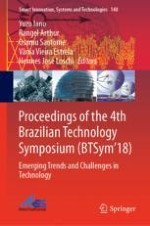This book presents the Proceedings of The 4th Brazilian Technology Symposium (BTSym'18). Part I of the book discusses current technological issues on Systems Engineering, Mathematics and Physical Sciences, such as the Transmission Line, Protein-modified mortars, Electromagnetic Properties, Clock Domains, Chebyshev Polynomials, Satellite Control Systems, Hough Transform, Watershed Transform, Blood Smear Images, Toxoplasma Gondi, Operation System Developments, MIMO Systems, Geothermal-Photovoltaic Energy Systems, Mineral Flotation Application, CMOS Techniques, Frameworks Developments, Physiological Parameters Applications, Brain Computer Interface, Artificial Neural Networks, Computational Vision, Security Applications, FPGA Applications, IoT, Residential Automation, Data Acquisition, Industry 4.0, Cyber-Physical Systems, Digital Image Processing, Patters Recognition, Machine Learning, Photocatalytic Process, Physical-chemical analysis, Smoothing Filters, Frequency Synthesizers, Voltage Controlled Ring Oscillator, Difference Amplifier, Photocatalysis and Photodegradation. Part II of the book discusses current technological issues on Human, Smart and Sustainable Future of Cities, such as the Digital Transformation, Data Science, Hydrothermal Dispatch, Project Knowledge Transfer, Immunization Programs, Efficiency and Predictive Methods, PMBOK Applications, Logistics Process, IoT, Data Acquisition, Industry 4.0, Cyber-Physical Systems, Fingerspelling Recognition, Cognitive Ergonomics, Ecosystem services, Environmental, Ecosystem services valuation, Solid Waste and University Extension. BTSym is the brainchild of Prof. Dr. Yuzo Iano, who is responsible for the Laboratory of Visual Communications (LCV) at the Department of Communications (DECOM) of the Faculty of Electrical and Computing Engineering (FEEC), State University of Campinas (UNICAMP), Brazil.
